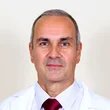This is how our application simplifies the booking and administration process. Interested >>
Golfer’s elbow surgery
In case of a golfer’s elbow, microscopic ruptures occur initially due to the overload of certain muscle groups, and repeated traumas, then in a subset of cases, macroscopically visible ruptures occur in the muscle. Conservative (non surgical) treatment has special importance in case of golfer’s elbow, but a surgical procedure is performed if that is ineffective.
Golfer’s elbow is an overuse injury, which develops at the insertion area of the forearm flexors, at the inner side of the elbow joint. It most commonly develops as the consequence of repeated microtraumas. It could develop not only in golfers, but also in people who do other sports, or physical labor. However, keep in mind that the development of golfer’s elbow, and the prolongation of complaints, which started as a consequence of loading, but which did not improve by treatments, could also be caused by the presence of an inflammatory focus in the body (inflammation that is present somewhere else). These foci most commonly could be dental or laryngeal, and urological in men, and gynecological in women. Sometimes smaller bone spurs may develop at the outer side of the elbow, which cause pain that is unresponsive to treatment.
What are the treatment options for golfer’s elbow?
Non surgical treatment
The treatment must be started with an investigation in every case. An X ray scan must be done to rule out other pathologies with similar symptoms. Afterwards, forearm stretching exercises and physiotherapy is recommended with non steroid anti inflammatory drugs, which may be complemented by other physical therapy treatments. If the complaints remain unchanged with the treatments, a more complex investigation is recommended with focus search, and laboratory tests. If the cause is revealed during these examinations, then the treatment must be continued at the affected area – dentistry, urology, gynecology, laryngology, rheumatology. If the cause, so the focus of inflammation is eliminated, the complaints usually resolve within a few weeks or months. The symptoms and the pain may persist in other cases. These could be resolved by the repeated intake of anti inflammatory drugs, and application of physical therapy treatments. Surgery is performed if joint pain and swelling still persist despite of the above treatments.
Surgical treatment
The tightness of the forearm flexors is reduced during surgery. This could be achieved by the minor detachment and transposition of the insertion zone. If bone spurs were confirmed by X ray images, those are removed as well.
Usually, exercises may be started with a physiotherapist on the first day after surgery, depending on the physician’s instructions. It is recommended that the practiced exercises are regularly performed at home, and the operated limb is unloaded, if necessary.
Generally, a resting period of 4-6 weeks is recommended after the intervention. In non problematic cases, the patients are discharged home on the first day after surgery.
How is golfer’s elbow surgery performed?
During surgery, an incision of 2-3 cm is made on the inner side of the elbow. Following this, the insertion zone of the forearm flexors is located, then its tightness is resolved by making an incision on it, and the insertion zone is moved a bit further down. If bone spurs were confirmed by X-ray images, those are removed as well. Surgical hemostasis is performed after the surgery, and if necessary, a small drain is inserted, which removes the secretions and hematoma that developed after surgery. Elastic bandage is applied on your forearm and elbow after the surgery.
What happens if the justified surgical treatment is not performed?
The pain will persist causing additional subjective inconveniences, or potential difficulties in movement. Surgical treatment holds out smaller success if it is done after a chronic, long term inflammation.
If you have any questions, please send a letter to magankorhaz@bhc.hu!



